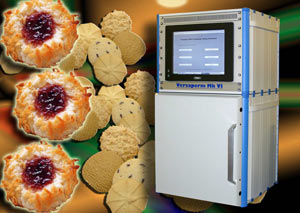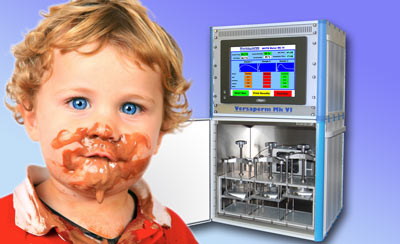

 One of the most important properties of most snacks is their crispness, which is created when the snack is dried during production – e.g. roasting, baking or frying which all reduce the moisture content to a very low level.
One of the most important properties of most snacks is their crispness, which is created when the snack is dried during production – e.g. roasting, baking or frying which all reduce the moisture content to a very low level.
Unfortunately many types of packaging allow this moisture to permeate back in – often through the material of the packaging rather than the joints or seals. Not only does this reduce the snack's crispness but the moisture accelerates biochemical changes such as oxidative rancidity. A low water vapour permeability of the package is, thus, usually the single most critical requirement.
Packagingalso needs to be innovative to attract customers – but it must also prevent products from drying-out - which also increases the snack's shelf life. In virtually all cases of packaded snacks water vapour is the culprit and causes damage and reduced shelf life that is estimated to cost millions in the UK alone.

Permeability of snacks and snack packaging
We offer both the equipment to help you measure and quality control the permeability. We also a fast and economical laboratory / QC based testing service for the snack food and confectionary industries to determines the critical permeability of products and their coatings and packaging.
Our equipment can test the permeability of a huge range of products and packages – from metalized foil packages and sachets through to sugar coatings and barrier materials. We can also provide measurements of the equilibrium relative humidity (ERH) of snacks that might are be decomposed by other water content measuring techniques.
It is worth taking a very brief look at some of the widely used packaging materials:-
Co-extruded Oriented Polypropylene (COPP): Is a good moisture barrier, gas barrier properties can be improved by coating it with PVdC. It can be used when gas flow is desired for MAP (Modified Atmosphere Packaging).
Ethylene Vinyl Acetate (EVA): Has high flexibility, and high permeability to water vapour and gases with excellent oil and grease resistance.
Ethylene Vinyl Acetate, has superior sealing qualities and blended polyethylene can make a strong peelable seal.
Ethylene Vinyl Alcohol (EVOH): A moisture sensitive, very high gas-barrier material, again often sandwiched.
High Density Polyethylene: with its higher softening point (than LDPE) it provides a physical barrier buts not suitable as a thermoformable sealant layer, clarity is poor.
High-impact Polystyrene: Opaque, thermoformable, and a moderately low gas-barrier.
Inomers: Are similar to polyethylene but have a high tack and can seal through a level of surface contamination.
Linear Low-Density Polyethylene (LLDPE): This has greater impact and puncture strength, tear resistance, elongation and resistance to cracking. It is commonly used for MAP.
Low Density Polyethylene: An extremely versatile material with low water vapour permeability but high gas permeability.
PET: High clarity that forms and thermoforms well.
Polypropylene (PP) and Oriented Polypropylene (OPP): Gives a high water vapour and gas barrier and has excellent grease resistance.
Polystyrene: A clear thermoplastic with a high tensile strength. It is brittle and a poor barrier to moisture vapour and gases.
Polyvinylidene Chloride (PVdC): Used for MAP as a gas-barrier coating, often sandwiched between other materials. It has outstanding barrier properties with low permeability to water vapour and gases.
Using the most appropriate materials can dramatically extend the life of snacks and preserve flavour, texture quality. However it depends not just the materials you use, but on the way you make the seals – which can vary even on the same equipment on a daily basis. The best solution is to test the materials, the packaging and the finished products.